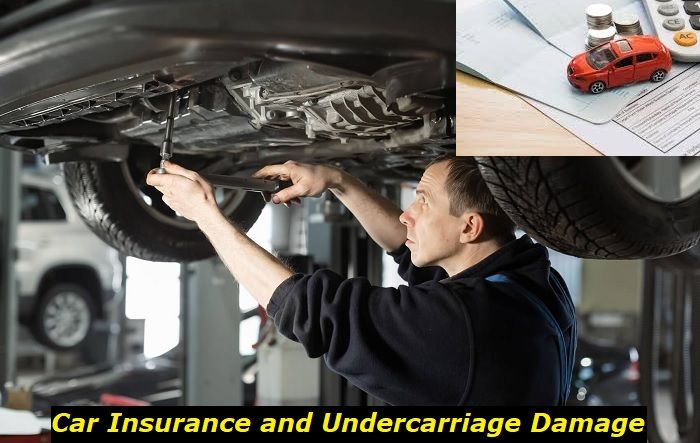The Ford F-150 is by far the most renowned truck in the world, selling nearly twice as many cars as the next competition. It is a top-rated, heavy-use vehicle for everything from max-load towing to long highway cruises.
F-150 automatic transmission highlights
- Average lifespan:150,000-180,000 miles
- Reliability Score:Low
- Prone to minor issues:Yes
- Price for repair after failure:$1,900-$2,400
- Price for replacement:$6,000-$7,500
- Availability of parts:Average
- Common problems:jerking, poor electronic system, a lot of upgrades and TSBs, transmission is still under development.

What is a Transmission Solenoid and How Do They Work?
- What are they?
A solenoid is an umbrella term for an electromagnetically controlled valve. In the context of a transmission, these often come in large numbers as part of a housing or "solenoid pack". This allows transmission fluid to travel simultaneously to and from different places. This fluid control puts hydraulic pressure on gears inside the transmission housing and is how automatic transmissions can shift gears without manual input.
- How do they work?
A solenoid is comprised of four main parts that work to convert electrical signals into mechanical movement. These four components allow transmission fluid to move and build pressure, an essential function for proper performance.
First, you have the wires. This is how the signal gets into the solenoid to open and close as needed. We'll touch more on why this is important later. Attached to these leads is a wire coil. This is what turns the electrical signal into an electromagnetic force. Next is a spring-loaded valve that can open and close depending on the magnetic pull the coil is emitting. One signal will open the valve, while another will close it. Lastly are the input and output openings, where the fluid enters through the solenoid.
Although it may seem complicated, this is a relatively simple piece, and some packs can have up to 10 solenoids each. In an F-150, there are only two types you need to be aware of:
- Pressure control solenoid
- Torque converter clutch solenoid
The pressure control solenoid is the main focus and works in the transmission to ensure gears are shifting. The torque converter solenoid is used to regulate the proper pressure in the torque converter coming from the engine to the drivetrain during shifts. The torque converter is a hydraulic coupling that replaces the standard clutch a manual transmission would have.
- Why are they important?
Remember the signal to those wires we brushed over? That signal comes from either the Engine Control Unit (ECU), the Transmission Control Module (TCM), and often both. The ECU is often called "the brain of the car" and is the same computer the rest of your car runs on. Its job is to monitor and control things like wheel speed, engine RPMs, and traction conditions.
Your ECU knows what is going on through the car and can control solenoids to shift the engine as needed. Drivability, fuel economy, and safety revolve around these computers working together to manage the vehicle properly. If the solenoids were to fail, you could lose practical function and endanger yourself if driving.
How Does a Solenoid Fail?
Transmission solenoids can improperly function or break altogether despite being built to last. Probable causes of a solenoid failure include:
- Contaminants
- Electrical failure
A solenoid fails when it no longer does its job correctly. In many cases, this is seen by the valve being stuck open or closed. If stuck, the solenoid cannot adequately control the flow and pressure of transmission fluid as the ECU or TCM tells it to, causing improper transmission function.
One of the most common reasons for solenoid failure, especially in a heavy-duty vehicle like the F-150, is contaminants. If oil, dirt, or sand get on or in the solenoid, they can cause it to stop working. This contaminant issue is often unavoidable, like engine oil making a starter fail. Damage to the solenoid pack can range, and we will discuss repair costs later.
Another cause of solenoid failure is a faulty electrical signal. In the best-case scenario, there is a blown fuse or shorted wire between the ECU and the solenoid. If there is an electrical issue with the solenoid and the wiring is tested to be intact, it is a sign the ECU or TCM is malfunctioning. This would be a much more expensive problem, as ECU and computer replacements are costly and complex.
Signs Your F-150 Solenoid Has Failed
Despite being an internal problem, out of sight does not mean out of mind. There are several distinct signs your solenoid pack has failed, and if caught in a reasonable amount of time, it can be fixed with no lasting damage.
- Strange shifting patterns
Being responsible for the timing of shifting, the earliest sign of solenoid failure is often an unusual shifting pattern. This is the most subtle sign your F-150 solenoid pack is having problems, as it requires the driver to be in tune with their car and notice something unusual.
Strange shifting patterns may be a sign of torque converter solenoid failure as well. If stuck open or closed, the engine gives too much or too little power to the transmission. This will cause changes in shift pattern as the transmission needs to overcome the engine's friction to shift.
- Will not downshift
Many owners with solenoid issues have also reported the lack of downshifting in the F-150. Downshifting is the act of going down gears when at lower speeds. This keeps the engine at a suitable RPM while the transmission revolves slower. Used most intensely in racing to preserve engine momentum when cornering, modern cars do this every time you slow down to prevent the engine from stalling.
When a solenoid in your transmission fails, the fluid inside cannot change or build its pressure. This causes shifting issues, as there is insufficient pressure to go up or down. If you retain the ability to shift up, your car will drive but likely stall when slowing down as it cannot shift down.
- Stuck in gear
Opposite to the downshifting symptom, if your car is stuck in gear, it cannot upshift. This means that the transmission and engine are locked in whatever gear they got stuck in, often first. This limits the driving ability of the car by drastically reducing the maximum speed it can travel, sometimes as low as 30 MPH. We have even seen cars with solenoid failure stuck in reverse.
Any significant change in the function of your car's ability to shift gears is a possible symptom of solenoid failure. If your F-150 is experiencing transmission problems, a mechanic will often scan its codes for free, letting you know the problem and helping you figure out your options.
Costs of Fixing a Failed Solenoid
- Simple Fix?
The solenoid pack on an F-150 is located on the passenger side of the transmission, in the oil valve housing, and can be accessed without dropping your truck's transmission. However, if you are uncomfortable with drivetrain work, it is recommended to get a mechanic to replace your solenoids.
- Parts Cost
A single solenoid for an F-150 will run you about $50-$80 depending on the quality and where you purchase it. However, an entire solenoid block can run anywhere from $250-$700. You are at the lower end of the range for just the block, but more expensive kits come with the solenoids pre-installed. This is often the more valuable purchase, as buying individual parts will not likely save you money.
The cost of these raw materials would be the price of replacing them yourself, as labor is not factored. Assuming you already have the necessary tools, a DIY solenoid replacement should run you no more than $700 on your truck.
- Labor Cost
Taken on by a professional, a solenoid replacement job should take about 2-4 hours. Hourly rates vary depending on the shop you visit, but after tool fees and upcharges, most average at $100 per hour. This puts the labor cost for the job anywhere between $200-$400. This will significantly increase if taken to the dealership, but it is an average quote for an independent shop.
- Total Cost
Now that you have found your solenoid issue, discovered what it is, and seen what it takes to fix it, you can make a final repair decision. If one solenoid has gone bad and you want to replace it yourself, expect to lose about $60 and 3-4 hours of your time. On the other end of the spectrum, if your whole solenoid pack has failed and you opt for a mechanic, you can expect to spend upwards of $1100.
Despite the simple design, your transmission solenoids are an essential piece of hardware and keep your F-150 running smoothly and safely.
About the authors
The CarAraC research team is composed of seasoned auto mechanics and automotive industry professionals, including individuals with advanced degrees and certifications in their field. Our team members boast prestigious credentials, reflecting their extensive knowledge and skills. These qualifications include: IMI: Institute of the Motor Industry, ASE-Certified Master Automobile Technicians; Coventry University, Graduate of MA in Automotive Journalism; Politecnico di Torino, Italy, MS Automotive Engineering; Ss. Cyril and Methodius University in Skopje, Mechanical University in Skopje; TOC Automotive College; DHA Suffa University, Department of Mechanical Engineering






Add comment